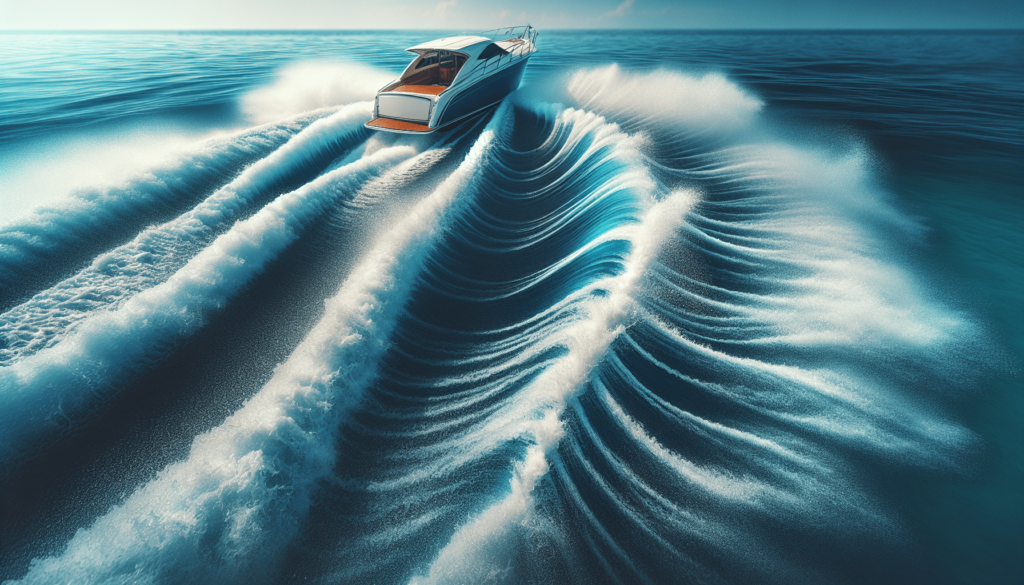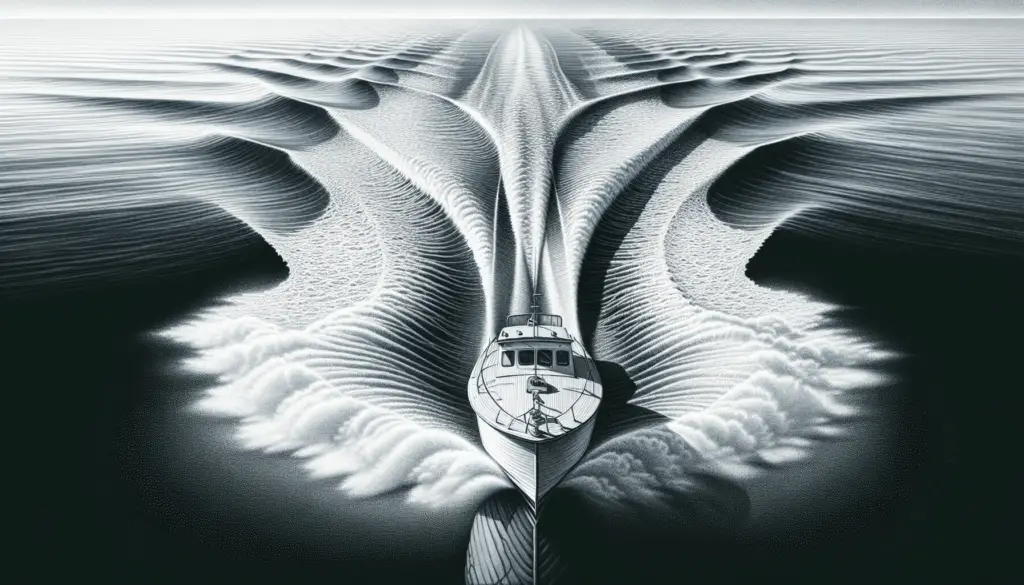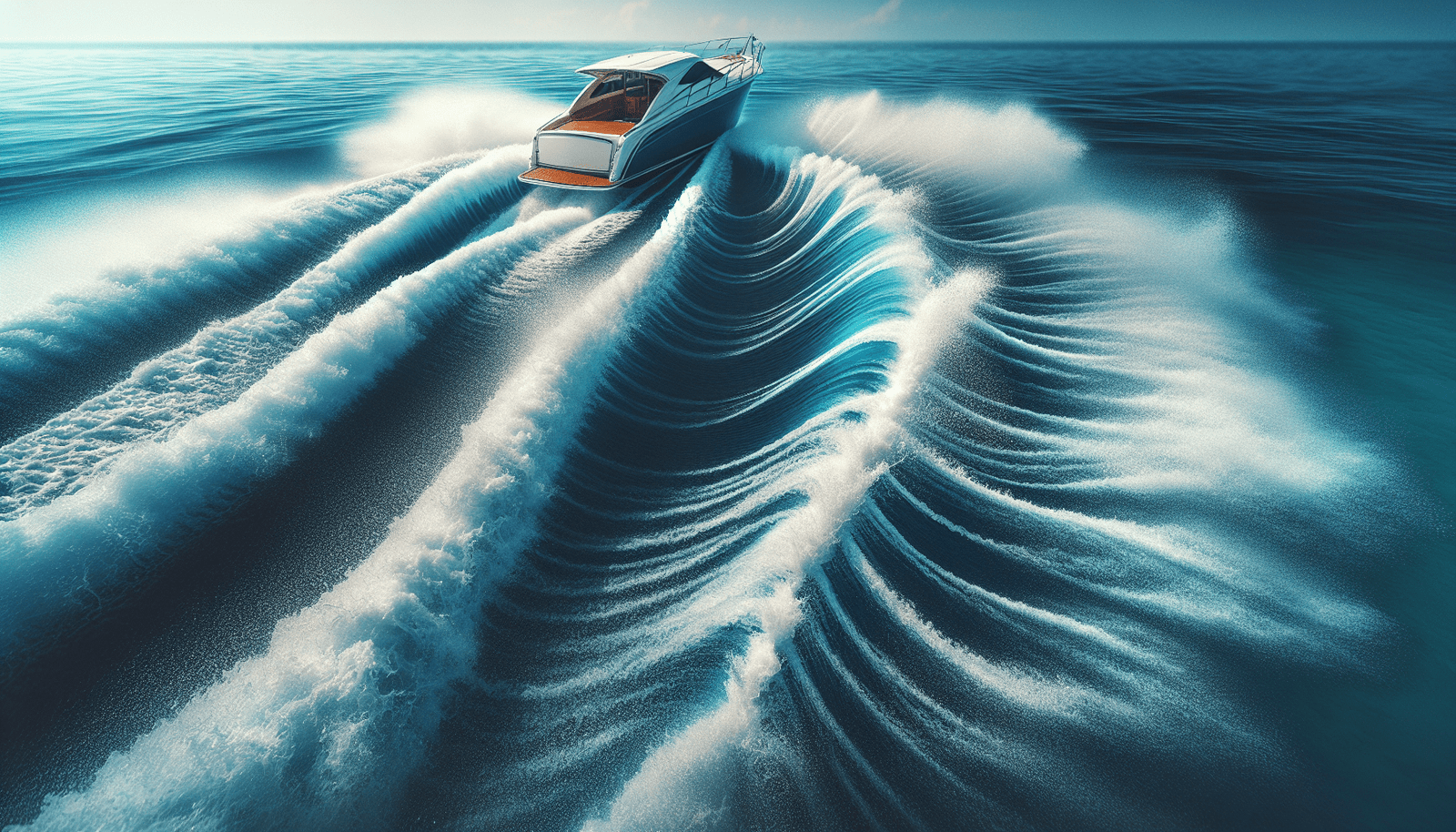As you skim over the serene waters in your motorboat, have you ever pondered about what you leave behind? Painted on the surface of the water, you design a temporary, vanishing artwork known as a ‘boat wake’. It’s not just an aquatic marvel, it carries repercussions – a significant force that distorts the tranquility of water bodies and impacts creatures that dwell within. Understanding Boat Wake: Safety and Regulations unleashes this fascinating subject, serving to expand your horizon on this seemingly insignificant trail. The narrative thread of the article embroiders together elements of safety concerns, regulatory norms, and measures to mitigate the potency of your watery footprints. Hopefully, it inspires a new level of respect and caution for the wake that trails you when you embark on your next leisurely or adventurous sailing excursion.

What is Boat Wake?
Dipping your toes into the realm of boating, you might stumble upon the term ‘boat wake’. So, what is boat wake?
Definition of Boat Wake
Underneath a blanket of nautical jargon, lay simple concepts. One such concept is the ‘boat wake’. A boat wake is a series of waves created by a vessel as it moves through water. Picture a stone skimmed across a glassy pond, altering its serene surface with ripples in its wake – it’s essentially the same concept.
How Boat Wake is Created
Scraping the surface slightly deeper, you’d find that boat wake is created as a consequence of displacement of water. As a boat powers forward, it displaces or pushes water out of its way thereby forming waves that trail behind it, evident as the boat’s wake.
Factors Affecting the Size and Shape of Boat Wake
The delicate dance of nature and man-made wonder plays out in the creation of boat wakes, as several factors contribute to their size and shape. The swath of waves left in a boat’s path are influenced by the vessel’s speed, hull shape, draft (the submerged part of the boat), and weight, among other factors. It’s a fascinating spectacle – that ballad of physics and engineering!
Understanding the Dangers of Boat Wake
The sparkling waves left trailing behind a boat might appear beguiling, but they potentially harbor dangers.
Potential Damage to Shoreline and Aquatic Habitat
An uncontrolled boat wake can erode shorelines, damage aquatic habitats, and disturb local wildlife. As the waves crash onto the banks, they gradually wash away the sediment, altering the landscape and uprooting vegetation.
Hazards to Other Boaters and Water enthusiasts
Imagine being at sea, engrossed in your leisurely paddle across gentle waves, when out of nowhere, you’re confronted by massive, towering waves – a disheartening encounter indeed! Poorly managed boat wakes jeopardize the safety of other boaters, fishermen, kayakers, and anyone else enjoying the water.
Risk of Drowning Accidents Due to Boat Wake
Perhaps the most chilling consequence of all – a reckless boat wake increases the risk of drowning accidents. The sudden onset of large waves can topple small vessels, catch swimmers off guard, and pose a grave threat to water safety.
Boat Wake Safety Measures
The good news? Boat wake related hazards are avoidable. The key to prevention lays in common sense and a few safety measures.
Maintaining Safe Speeds
One simple, effective way to minimize boat wake is by maintaining safe speeds, especially in crowded or shallow waters. Depending on the vessel’s design, there might be a ‘hull speed’ beyond which the wake becomes significantly larger and more dangerous.
Awareness of Surrounding Water and Land Conditions
A savvy boater maintains awareness of both water and land conditions. Variances in water depth, elements of the shoreline, and the presence of other water-users should all inform boating speeds and behavior.
Adherence to No-Wake Zones
You might notice areas marked as ‘no-wake zones‘. These sections are designated for the protection of aquatic habitats, shoreline structures, or water safety, and it’s crucial to respect these restrictions.
Navigating through Boat Wake
Wake encounters are almost inevitable whilst at sea. Fear not, because there are ways to navigate efficiently.
Proper Bow Position
Upon encountering a wake, raise the bow of your boat by slowing down and allowing the boat to tilt forward. This tactic decreases the chance of the boat overturning or becoming swamped by water.
Correct Steering Techniques
Steer the boat to meet the wake at an angle. This maneuver allows each wave to pass under one side of the boat at a time, reducing the risk of capsizing.
Safe Distancing From Wakes
Maintain a safe distance from other vessels and their wakes whenever possible. Distance gives you time to react and minimizes the impact if a collision does occur.

Boat Wake Regulation Overview
The significance of managing boat wakes is well-recognized under law. An intricate layer of rules and regulations exist to promote safety and balance in waterways.
Boating Laws Regarding Wake
Broadly, boating laws compel operators to conduct their vessels in a safe and respectful manner. This includes avoiding excessive or dangerous wake and taking responsibility for any damage it causes.
Specific Wake Restrictions
Specific wake restrictions can be enacted by local, federal, or state authorities. These might depend on the nature of the body of water, local wildlife, water traffic, and a multitude of other factors.
Understanding of Federal, State, and Local Laws
For peace on the waters, it’s imperative to understand and adhere to all levels of legislation concerning boat wake. This also entails being aware of any changes or updates in these laws.
Enforcement of Boat Wake Regulations
Maintaining the balance in waterways is a shared responsibility. The enforcement of boat wake regulations is spearheaded by boating safety officers and supported by boaters themselves.
Role of Boating Safety Officers
Boating safety officers patrol waterfronts, ensuring compliance with boating laws. They educate boaters about wake regulations and respond to violations. Their service forms the frontline in wake-related accident prevention.
Penalties for Wake Violations
Wake violations can result in fines, penalties, or even suspension of boating privileges. The severity of the punishment typically reflects the nature and frequency of the violations.
Reporting Irresponsible Boating Behavior
Every water enthusiast is a stakeholder in maintaining the tranquility of our waterways. Don’t hesitate to report irresponsible boating behavior to local authorities. It could potentially save lives, and preserve our natural environment for future generations.
Impact of Boat Wake on Marine Life
Our waterways swim with life, from the tiniest algae to the largest whales. However, an excessive boat wake can disrupt these underwater ecosystems.
Influence on Fish and Invertebrate Communities
The disruption of water by boat wakes can affect fish and invertebrate communities, displacing them from preferred habitats, interrupting feeding, and causing physiological stress.
Disruption of Aquatic Plant Growth
Boat wakes can damage or uproot aquatic plants, interrupting their growth and altering their populations. Aquatic vegetation provides food, shelter, and serving purposes in maintaining water quality. Any disruption to these plants can impact entire ecosystems.
Effect on Bird and Wildlife Populations
On land, the eroding effect of boat wakes can potentially destroy burrows and nests close to the water’s edge. Birds and shoreline-dependent wildlife can lose crucial breeding and feeding grounds, leading to population declines.
Eco-Friendly Boating Practices
It might seem like a daunting task to go against the tide to drive positive change. Yet, each boater’s commitment to eco-friendliness can collectively make a significant difference.
The Importance of Reducing Wake Impact
Reducing the impacts of boat wakes goes beyond safety and legal compliance. It allows us to respect and preserve sensitive ecosystems, ensuring they can be admired by future generations.
Practices for Minimizing Environmental Effects
Eco-friendly boating includes practices like operating at minimal wake speeds, respecting no-wake zones and other regulations, avoiding sensitive areas, and routinely maintaining your vessel’s hull to ensure optimal performance.
Promoting Sustainable Boating Habits
Promote sustainable boating habits within your boating community. Share information, encourage each other to respect regulations, and set an example for others to follow.
Boating Safety Education
Navigation and adherence to speed limits are not the only important aspects in boating. Education is the key to unlock a safe and enjoyable boating experience.
The Importance of Boating Safety Courses
Boating safety courses cover navigational rules, emergency procedures, boat handling, and more, shaping responsible and thoughtful boaters. These courses can be life-saving, providing both theoretical knowledge and hands-on training.
Learning about Boat Wake and Other Hazards
Courses offer comprehensive education about potential hazards including boat wake dangers. Armed with such knowledge, boaters can confidently navigate through any situations they may encounter on the water.
Certification and Continued Education
Boating safety education doesn’t stop with a single course. Continued learning via safety refreshers and staying updated with new laws and regulations should be a lifetime commitment for every boater.
The Future of Boat Wake Regulations
As our understanding of boat wakes continue to grow through research and technology, we can expect corresponding changes in laws and regulations.
Potential Changes in Boating Laws
Future boating laws might impose stricter measures on wake control, especially in ecologically vulnerable areas. They might also incentivize boaters to use more efficient, less wake-generating boats.
Role of Technology in Enhancing Boating Safety
In the digital era, technology continually enhances boating safety. From sophisticated navigational tools to wake reduction technologies, the role of technology in navigating waters safely and efficiently is set to expand.
Ongoing Research in Wake Effects and Mitigation Strategies
Researchers constantly probe the depths of boat wake effects and seek innovative mitigation strategies. This ongoing research promises a future of safer and more sustainable boating.
Remember, every wave we create is an echo of our relationship with nature and fellow water enthusiasts. The ripple effects of our actions create the world we live in. So, let’s make those waves count, responsibly and respectfully!

